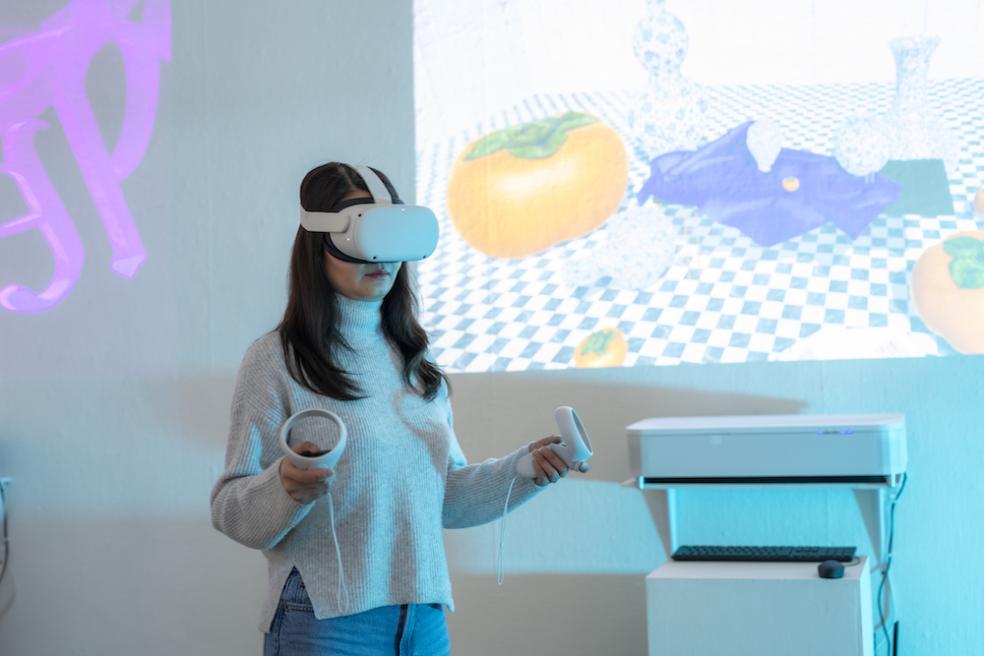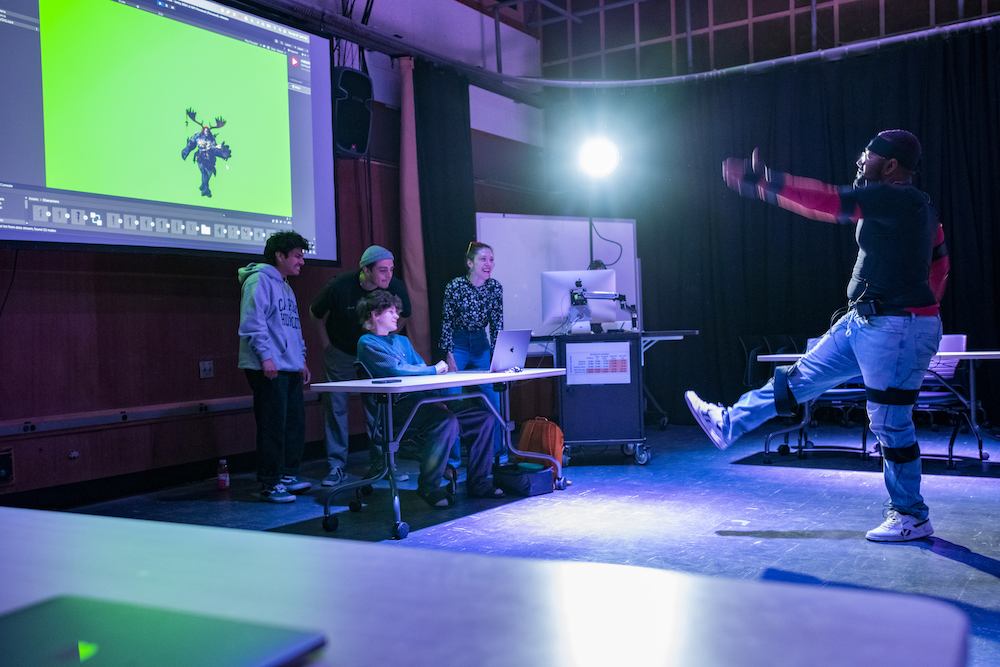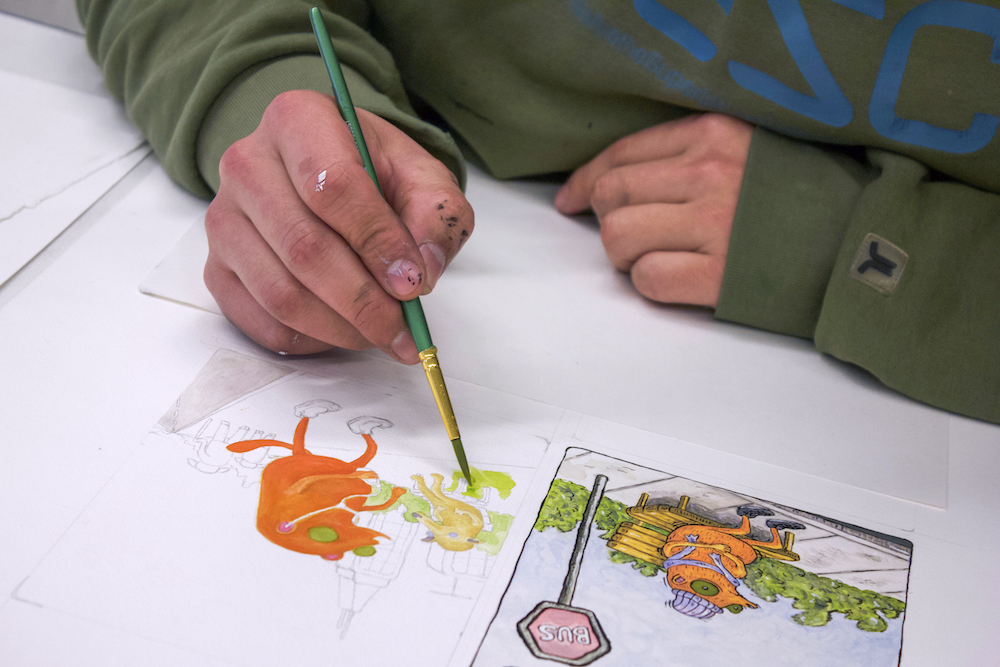
Cal Poly Humboldt’s new Bachelor of Fine Arts (BFA) in Media Arts prepares students to thrive in a tech-driven world, combining hands-on artistic practice with the digital fluency needed for today’s—and tomorrow’s—creative careers.
The interdisciplinary program launches this fall, one year ahead of its proposed fall 2026 launch date. It exemplifies the University’s polytechnic vision by blending traditional art-making with innovation, preparing students for work across multiple media arts fields like animation, photography, filmmaking, and digital design, explains Nicole Jean Hill, chair of the Art + Film Department.
The program sits at the intersection of art and technology, emphasizing both innovative and foundational skills, Hill says. “If you're studying animation, you're also going to be learning drawing, color theory, life drawing—skills that graduates of other programs often lack,” says Hill.
“We created the BFA in Media Arts to reflect the way artists and creative professionals are working today,” she adds. “This program is designed to be more responsive to current industry demands and flexible enough to grow and evolve as those demands change. There’s a lot of room for students to shape it to fit their own interests.”
The program is part of Cal Poly Humboldt’s polytech transformation, a multi-year effort that began in 2023 with nine new degrees, including Software Engineering, Cannabis Studies, and Marine Biology. An additional 11 bachelor’s and master’s degrees are expected to launch by 2029.

For Hill, the arts play a critical role in realizing the polytechnic mission.
“This is what embodying a polytechnic in the arts looks like,” she says. “It’s applied learning. It’s working across disciplines. It’s hands-on creative practice rooted in technology, but also in collaboration and storytelling.”
Earlier this year, visiting accreditors from the National Association of Schools of Art and Design (NASAD) praised Cal Poly Humboldt’s Art + Film Department as one of the strongest programs in the country. They were most impressed by the caliber of the faculty, and the diversity of different mediums available to students.
“Students can explore digital media and traditional hands-on processes,” Hill said. “The fact that students can explore everything from digital media to ceramics, jewelry, animation, and analog photography—it’s a rare kind of range.”
The Humboldt County setting is also a draw.
“We’re not in a big city full of distractions,” says Hill. “This is a place where students can really focus on making art—and doing so with a community of people on campus together.”

Supporting the program’s launch is a major renovation of Jenkins Hall, which opens to students this fall. Originally built in 1950, it will be the new home of the ceramics and sculpture programs and flexible classroom and critique spaces.
The space was retrofitted for these studios, Hill explains, enhancing workflow and making it easier for students and faculty to move seamlessly between stages of the creative process.
“A lot of what makes a studio work well comes down to flow and usability,” she says. “The new layout was designed in collaboration with the art faculty and staff to prioritize how students actually move and work in the space. That kind of behind-the-scenes planning is huge for student success.”